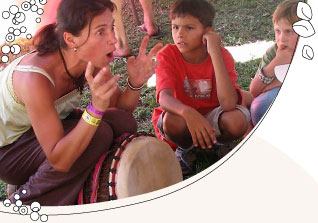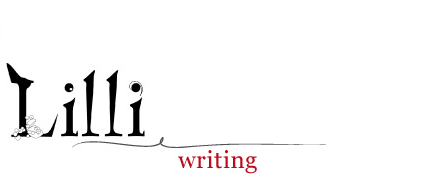|
Published in Buzz Words
The Latest Buzz on Books for Children
A fortnightly online magazine © Vicki Stanton
15 November 2009, Issue 72
The Tradition of Oral Storytelling
and the Creative Writer
By Lillian Rodrigues-Pang
Many of us have heard of the oral tradition
of storytelling. It is often referred to as a romanticised
feature of days gone by or of the culture of "others".
Many professionals are referred to as storytellers: the author,
scriptwriter, songwriter, screenwriter, to mention a few.
In this world of dynamic communication, with technology changing
the face of story delivery, what then does the ancient tradition
of oral storytelling have to offer?
While some may see it as a feature of the past,
oral storytelling is a practice that is alive and well in
Australia and the world. Folk tales, cultural tales, creation
tales, religious tales and the life story are available for
you to hear in person, on CD, bit-torrent and iTunes download.
Oral storytellers are in clubs and pubs, hotels, preschools,
aged-care facilities, hospitals, jails, libraries, museums,
schools, TAFEs, universities and on the web. When you get
a chance to look, oral storytelling is all around us.
I am a professional oral storyteller (www.thestoryline.com.au).
I tell stories to children, youth, adolescents and adults
in a number of different contexts and settings. I do not read
books to people. I tell the story in the traditional manner,
from my mouth and heart to your ears and heart.
There are two facets to my storytelling; one,
the performance of stories and, two, working with story. As
a performer I work mainly in the preschool, primary school
and festival environment. I do a show that is interactive,
large and includes music, song and a range of languages. When
I work with stories it is mainly in primary school and mental
health settings.
Over the years I have had the pleasure of providing
a number of storytelling workshops to writers’ groups.
This article springs from that work and will explore how the
ancient art of oral storytelling is still relevant and can
inform your written practice.
The relevance is vast, from adaptation of the
story content (think Pamela Allen, Paulo Coelho), calling
to the traditional story characters (think Anna and Barbara
Fienberg with Tashi) and holding onto the structure (i.e.
three failed attempts, then success leading to happy ever
after). All writers may or may not draw on these elements
of the oral story.
As a writer and a performing storyteller I believe
the main offering is characterisation. To deliver a captivating
tale an oral storyteller must deliver a believable and full-bodied
character to the audience.
Following is a description of the character
development process I undertake. It may hold features that
you can implement in your creative and/or writing process.
Regardless of the audience age or length of
the story, my preparation begins with:
Stage One
I develop a full graphic (mental) picture of the main character(s).
In this picture I include:
- name
- the history and meaning of the name
- character’s like/dislike of his/her name
- birth date and in particular the birth year of the character
- The historical/political social setting of the character
(when born, growing up and time of the story)
- physical characteristics, such as height, weight, hair
colour, ethnicity, descendent from, as this may inform characters
looks and language usage. t will also suggest movement features,
e.g. a corset restricts slouching, riding boots lead to
heavy footsteps, a child who has only ever worn ballet slippers
may move everywhere on their tip toes.
- likely clothing of the era/age group including use of
hats/shoes etc
- colours that this character wears or is drawn to
- relationships (mother/brother/sister/best friends/recent
friends/friendships of convenience that exist with the character
at the time of the story and before the story/event. At
first this involves only the most obvious ones.
- environment that they live in/restrictions or offerings
that hold for the character
Note – If the character is not human, as is often the
case in folk tales, I do all of the above with an emphasis
on the environmental issues such as style of home/nest, river
conditions etc. In one story I have a rooster who loves eating
(pecking at scrap heap) but loves having clean chest feathers,
so this allows the tensions/adventures of the tale to develop.
Stage Two
I call this the play or incubation time. This is time away
from the paper/computer. I take long walks, swim laps or drive
very distractedly on long trips. During this time I allow
the character to take a voice in my head. I also practise
out loud and play with the physical aspects of the character,
getting in touch with the character’s movements, speech
patterns, dance style, etc.
During the incubation time I play with the characteristics
I have assigned in stage one. Some features will change and
some will grow. I also find that within the first three times
of performing (editing when it is a manuscript) this is wide
open for change.
An example is the story of the Hat Seller. The hat seller
is asleep under a tree and has his hats stolen by the monkeys
who inhabit that tree. He has to figure out how to get his
hats back. When I tell this story I have him placed in Mali.
Originally the image was of him dressed up in traditional
clothing (very colourful and gregarious) which drew kids and
adults in. During my 'playtime' I decided that his clothes
were a distraction and only the hats would be colourful; he
became a simply dressed man. I now find that during feedback
sessions the kids will draw or tell me of the hats, the monkeys
and the physical environment more than the man. This is important
to me as it holds to the essence of my version of the story.
During the playtime I also assign an animal figure to the
character. This is a drama skill I learnt during a master
class with Wolfe Bowart, one of the world's greatest clowning
and physical theatre performers.
What does this actually mean? Well, in my example of the
hat seller, the animal I have assigned to the seller is a
giraffe. He is tall, has a long neck with stacks of hats making
it longer. He dresses plain. He moves gracefully over distance
but is a bit lanky and awkward amongst villages.
What impact does this have? Prior to performing the hat seller
story I decide what percentage giraffe I will give him. For
a younger audience I may assign 80% giraffe. This impacts
on the way my man will move, the time it takes to get anywhere,
the kind of view/terrain he will notice. He may grunt and
lick his lips all the time, which affects the words he will
use, etc.
I also play/perform him as 20% giraffe. He has big eyes, is
a bit of a long slow mover when he travels amongst people
and is always stretching his neck to get the gossip.
Ultimately assigning a 'guiding spirit' this way helps me
to understand the characters and to represent them properly
in my performance or writing. When the story I am telling
is long or involves many characters this feature helps me
to stay true to the character which is very important when
choosing dialogue or events to include.
Stage Three
This is where the written and oral practices diverge. During
stage three I create a new image of the character –
a list or drawing or combination of the two. I really go to
town with the crayons, pens, paints or clay here just because
I can! I am not a good visual artist but I really enjoy it.
I may also create/choose a piece of music that represents
the character.
I plot the events I know will happen, with constant reference
to the (named and animal) character. Having such a profile
often suggests or eliminates events/dialogue. In our example
of the hat seller, I do not have my man involved in regular
Saturday markets. He travels independently from village to
village according to a walking plan. He does get involved
with the local gossip – it’s business after all
– as I can see a giraffe sticking his head in every
now and then.
So you can see how the first two stages are essential for
me to present a believable/consistent character, be that on
stage or as a written piece. It is a practice that has developed
over years, with different elements taking priority at different
times. Many people have unique character development processes,
and this one may or may not be something that you would like
to try. One final suggestion – do not act out your characters
in the front room with the curtains open. Some neighbours
have started to avoid eye contact with me!
©Lillian Rodrigues-Pang
|

